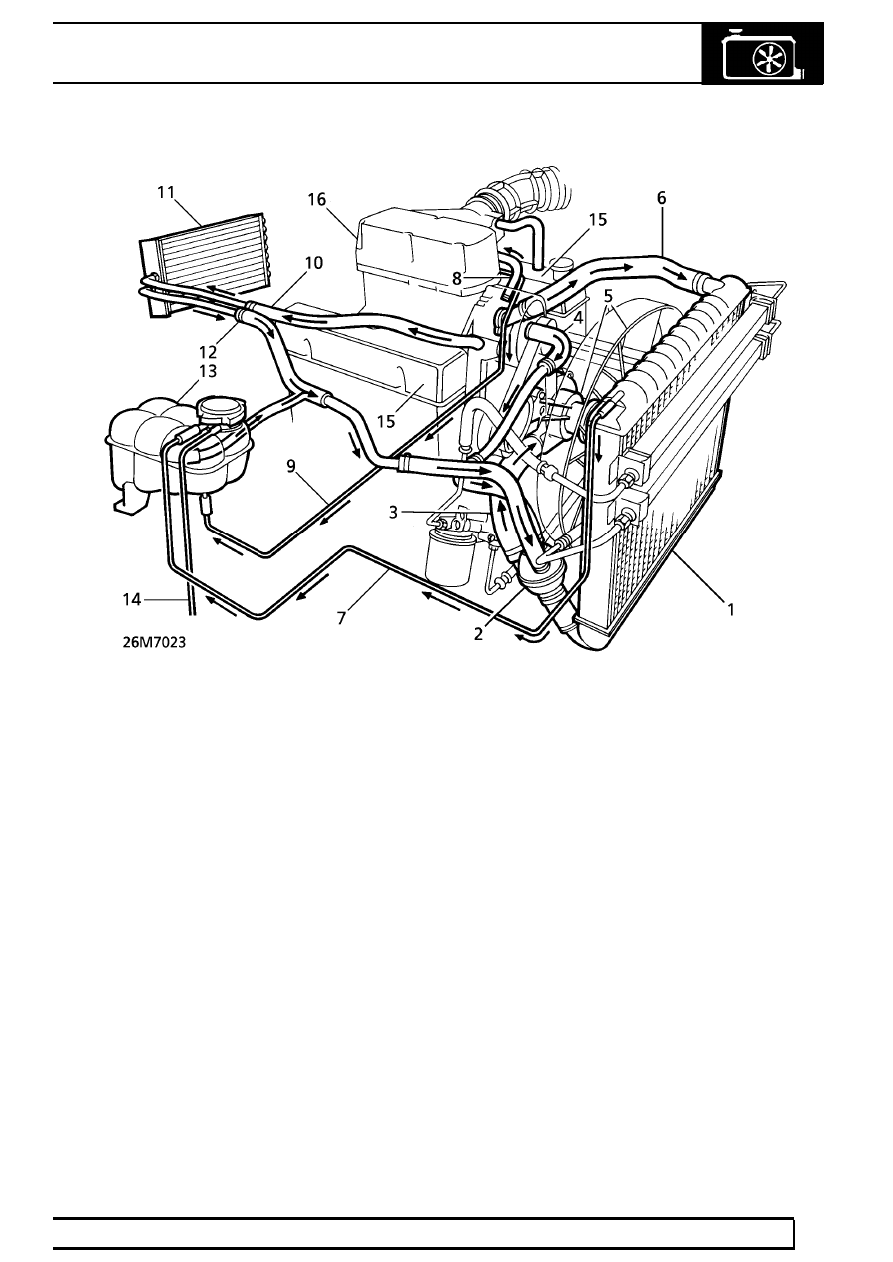Range Rover. Manual - part 123

LAND ROVER V8
7
DESCRIPTION AND OPERATION
Cooling system coolant flow - up to 99MY
1. Radiator
2. Thermostat housing
3. Bottom hose
4. Bypass hose
5. Viscous fan and water pump
6. Radiator top hose
7. Radiator bleed pipe
8. Plenum chamber feed pipe
9. Plenum chamber bleed pipe
10. Heater feed hose
11. Heater matrix
12. Heater return hose
13. Expansion tank
14. Overflow/breather pipe
15. Cylinder banks
16. Plenum chamber